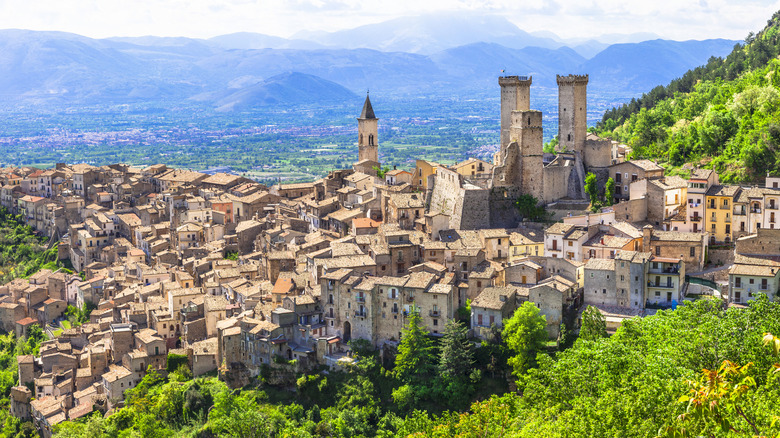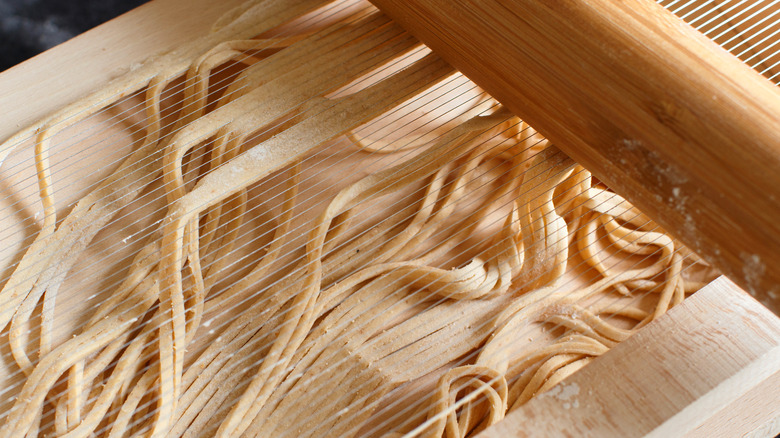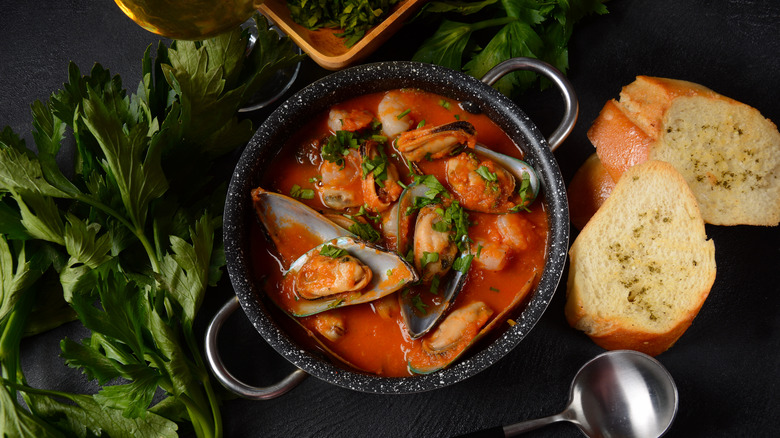The Unexpected European City Giada De Laurentiis Says Is Home To The Best Pasta
Pass the pasta, please. It's a rite of passage to overindulge just a little bit in Italy's world-class carb collection when abroad in the country. You can find authentic trattorias and enotecas on just about every street corner in this European nation, delivering the best pasta plates you'll taste in your lifetime. Over-popularized tourist cities like Florence, Rome, and Naples have been credited as some of the top foodie destinations in Italy by renowned media outlets, such as The Times Magazine.
Wedged in the heart of Italy's Abruzzo region, underrated hamlets like Fara San Martino often house some of this country's most ingenious culinary talent. If anyone knows how to spot a ristorante worthy of stopping in for a crafty plate of pasta, it's Giada De Laurentiis. As an Italian native and food connoisseur, she's more than capable of advising visitors exactly where they should direct their energy for food.
The small southern region of Abruzzo that brushes against the Adriatic Sea is the crown jewel of Italy's pasta-making scene. Known as the "Capital of Pasta," Fara San Martino might be small in population but is worth the extra miles off the beaten path for the forkful of bliss that awaits. Pasta might as well be the local currency in this village, as locals love to celebrate the heart and soul of their community with an outpouring of festivals and celebrations. Nestled in the heart of Majella National Park, its location alone contributes to its reputation as a pasta-making haven.
Pasta - a reason to celebrate!
Thanks to its secluded location within some of Italy's most picturesque wilderness, locals in Fara San Martino have access to an abundance of natural resources, from naturally grown wheat to spring water carried by the nearby Verde River. Together, Abruzzo's landscape translates into a montage of pasta shapes, dishes, and local specialties originating in this corner of Italy. According to Laurentiss, there are four world-renowned pasta companies headquartered in Fara San Martino, including the popular De Cecco label and artisan brand Giuseppe Cocco.
Pasta is such a deeply ingrained cultural element in this region that the village even has its own Pasta Museum, where visitors can engage in pasta-making classes, and learn about the history of pasta and traditional Italian pasta-making techniques of Fara San Martino. One of the most intricate tools used to shape and mold these small heavenly morsels is the chitarra pasta cutter. Chefs slowly roll out each string of pasta one by one using this guitar-like culinary tool, a testament to the time and passion that goes into each specially crafted pasta dish.
If you plan your trip accordingly, you might just have a chance to witness this town's largest festival display of the year. According to Laurentiis, Fara San Martino holds an annual Sagra Della Pasta De Cecco, a celebration of the region's bread and butter. Hosted during the peak of summer in August, this two-day event is an all-out food frenzy, showcasing every pasta dish originating in Fara San Martino.
Eat like a local with these five regional specialties
Pasta is a given, but what food is exactly native to the region? Laurentiis has a few local favorites that are staples in her diet whenever she finds herself visiting this underrated Italian destination. Spaghetti alla chitarra might be the most famous dish in this region, not to overshadow other local favorites, like confetti di Sulmona and brodetto alla pescarese. Spaghetti alla chitarra is traditionally crafted using the chitarra pasta cutter. Combining durum wheat semolina and water, the dough is fed through the instrument, resulting in square-shaped pockets that are cooked and folded into a beautiful medley of tomatoes and basil — an innovative alternative to traditional store-bought spaghetti, we'll say!
Travelers with an insatiable sweet tooth will be entranced by confetti di Sulmona. More than a simple sweet treat, these candy-coated morsels were an ancient Roman tradition that was so beloved they're still a local staple today. Almonds, dried fruit, or pine nuts are covered with cinnamon and a hard coating of sugar, translating into a simple yet indulgent snack to satisfy a sugar craving. In the cooler months, especially, brodetto alla pescarese is a blessing to cradle in your hands to keep warm from the flurries outside. According to Italy Magazine, this local staple originated as the "poor man's" stew, crafted from a medley of seafood scraps and tomatoes. Today, it's served at many higher-end eateries and is often served alongside pasta — the regional specialty!


